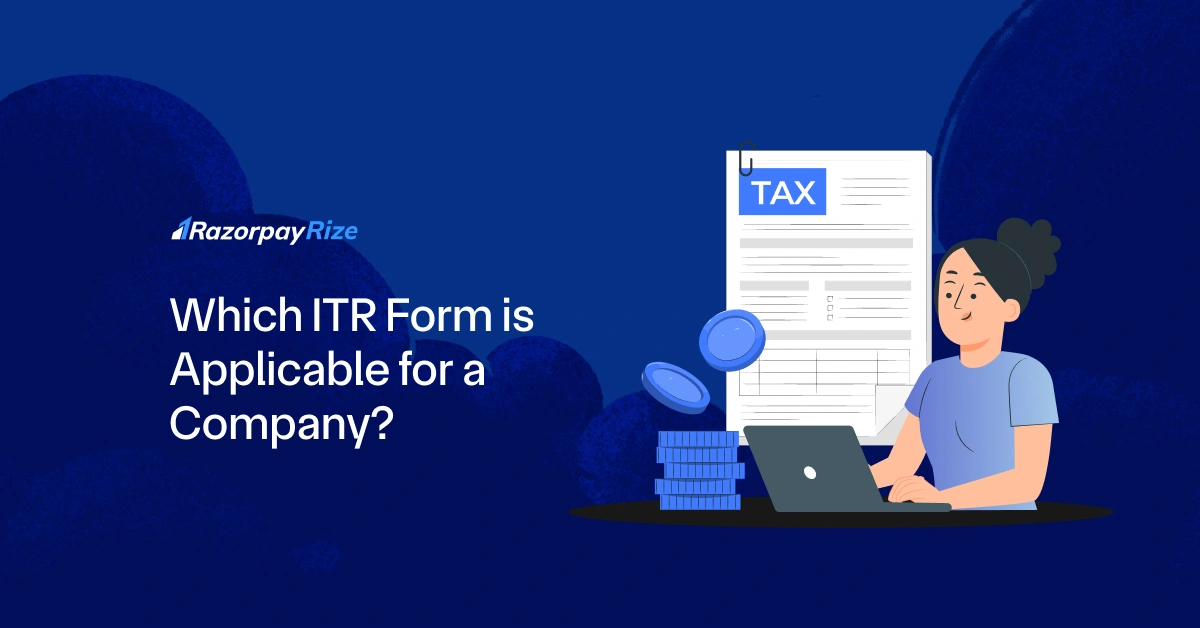Filing Form ADT-1 is a crucial step in ensuring compliance with the Companies Act regarding the appointment of the first auditor. This form notifies the Ministry of Corporate Affairs (MCA) about the auditor's appointment within 30 days of company incorporation. It is essential for companies to understand the importance of this form and adhere to the filing requirements and deadlines to avoid penalties.
Table of Contents
What is Form ADT-1?
Form ADT-1 is a mandatory filing under the Companies Act, 2013, used to inform the Registrar of Companies (ROC) about the appointment of an auditor in a company.
Key Points on Auditor Appointment & Filing Requirements
1. Appointment of First Auditor (New Companies)
For companies (excluding government companies):
The Board of Directors must appoint the first auditor within 30 days of incorporation.
If the Board fails to do so, the members must appoint the first auditor within 90 days at an Extraordinary General Meeting (EGM).
The first auditor holds office until the conclusion of the first Annual General Meeting (AGM).
Note: Filing Form ADT-1 is NOT required for the first auditor’s appointment. However, companies may choose to file it for compliance and record-keeping purposes.
2. Appointment of Subsequent Auditors
After the first AGM, companies must appoint an auditor for a five-year term (for private and public companies) or as per shareholder approval.
Form ADT-1 must be filed within 15 days of the auditor’s appointment to inform the ROC.
Timely filing of Form ADT-1 is crucial for companies to:
- Comply with legal requirements under the Companies Act
- Avoid penalties and legal consequences
- Maintain transparency in auditor appointments
- Ensure proper oversight of financial reporting
Who Needs to File Form ADT-1?
Is Form ADT-1 mandatory for all companies?
All companies incorporated under the Companies Act, 2013, are required to file Form ADT-1, including:
- Private Limited Companies
- Public Limited Companies
- One Person Companies (OPCs)
- Small Companies
- Dormant Companies
What happens if a company fails to file Form ADT-1?
Failure to file Form ADT-1 within the prescribed time can result in penalties and legal consequences for the company and its directors. The company may be fined between ₹25,000 to ₹5,00,000, and every defaulting officer may be punishable with imprisonment of up to 1 year, a fine between ₹10,000 to ₹1,00,000, or both.
Law Governing the Form ADT-1
The filing of Form ADT-1 is mandated under Section 139(1) of the Companies Act, 2013. This section requires companies to file the form with the ROC to inform them about the auditor's appointment, which is done after the AGM. The form contains essential details about the appointed auditor, such as their name, address, membership number, and date of appointment. Companies must submit Form ADT-1 within 15 days of the AGM to fulfil their legal obligations and avoid potential penalties for non-compliance.
Requirements for Filing Form ADT-1
- The company has appointed an auditor as per the provisions of the Companies Act, 2013
- The appointed auditor has provided written consent to act as the auditor
- The auditor has issued a certificate confirming they are not disqualified under Section 141 of the Act
- The company has obtained a Director Identification Number (DIN) for the signing director
- The signatory has a valid Digital Signature Certificate (DSC)
Companies must attach the necessary supporting documents, such as the board resolution for auditor appointment, auditor's consent letter, and certificate of eligibility while filing the form. Failing to meet these requirements can lead to the rejection of the form by the ROC.
Fees for Filing Form ADT-1
The filing fees for Form ADT-1 depend on the company's authorised share capital, as per the table below:
For LLP Companies without share capital, the filing fee is a flat ₹200.
Late filing of Form ADT-1 attracts additional fees, which increase based on the delay duration:
- Up to 30 days delay: 2 times the normal fees
- 31 to 60 days delay: 4 times the normal fees
- 61 to 90 days delay: 6 times the normal fees
- 91 to 180 days delay: 10 times the normal fees
- More than 180 days delay: 12 times the normal fees
Due Date For Filing MCA Form ADT-1
The due date for filing Form ADT-1 depends on whether the company is newly incorporated or existing:
For newly incorporated companies:
- ADT-1 for the first auditor must be filed within 15 days of the first Board Meeting
- This Board Meeting must be held within 30 days of incorporation, where the first auditor is appointed
For existing companies:
- Form ADT-1 should be filed within 15 days of the AGM where the auditor was appointed or reappointed
- Example: If the AGM was held on September 30, 2023, the ADT-1 due date would be October 14, 2023
While filing the form, companies must provide the following details about the appointed auditor:
- Auditor's category (individual or firm)
- Membership number of the auditor or firm's registration number
- Address and email ID of the auditor
- Permanent Account Number (PAN) of the auditor
- Period of appointment
- Membership number of the previous auditor in case of vacancy
- Date of appointment and AGM date
- Details of any casual vacancy (date and reason)
Along with these details, companies must attach the following supporting documents:
- Certified copy of the Board Resolution for auditor appointment
- Written consent of the auditor to act as such
- Certificate by the auditor confirming their eligibility under Section 141
- Copy of the intimation letter sent by the company to the auditor regarding their appointment
Penalty on Delayed Filing of Form ADT-1
Delayed filing of Form ADT-1 attracts penalties, which increase based on the duration of the delay:
- Up to 30 days delay: Twice the normal filing fees
- 31 to 60 days delay: Four times the normal filing fees
- 61 to 90 days delay: Six times the normal filing fees
- 91 to 180 days delay: Ten times the normal filing fees
- More than 180 days delay: Twelve times the normal filing fees
Companies must be mindful of the ADT-1 due date and ensure timely filing to avoid these escalating penalty fees. Repeated non-compliance can also lead to more severe consequences, such as fines and legal action against the company and its officers.
Important Points to Consider Regarding Form ADT-1
- Filing Form ADT-1 is mandatory for all types of companies, including private, public, and one-person companies.
- The responsibility of filing the form lies with the company and its directors, not the auditor.
- Form ADT-1 must be filed even in case of filling casual vacancies in the auditor's office.
- Companies should file Form ADT-1 for the appointment of the first auditor as well.
- Timely filing of the form with all necessary details and documents is crucial to avoid penalties and legal complications.
Process for Filing Form ADT-1
- Obtain a Digital Signature Certificate (DSC) for at least one Director of the company from a licensed Certifying Authority
- Ensure the signing director has a valid Director Identification Number (DIN)
- Download Form ADT-1 from the MCA portal
- Fill in the required company and auditor details accurately
- Attach the necessary supporting documents (Board Resolution, auditor consent, eligibility certificate, etc.)
- Verify the form using the director's DSC
- Submit the form electronically on the MCA portal
- Pay the requisite filing fees online using a credit card, debit card, or net banking
- Receive an acknowledgement email from MCA as proof of filing
Frequently Asked Questions
Private Limited Company
(Pvt. Ltd.)
- Service-based businesses
- Businesses looking to issue shares
- Businesses seeking investment through equity-based funding
Limited Liability Partnership
(LLP)
- Professional services
- Firms seeking any capital contribution from Partners
- Firms sharing resources with limited liability
One Person Company
(OPC)
- Freelancers, Small-scale businesses
- Businesses looking for minimal compliance
- Businesses looking for single-ownership
Private Limited Company
(Pvt. Ltd.)
- Service-based businesses
- Businesses looking to issue shares
- Businesses seeking investment through equity-based funding
One Person Company
(OPC)
- Freelancers, Small-scale businesses
- Businesses looking for minimal compliance
- Businesses looking for single-ownership
Private Limited Company
(Pvt. Ltd.)
- Service-based businesses
- Businesses looking to issue shares
- Businesses seeking investment through equity-based funding
Limited Liability Partnership
(LLP)
- Professional services
- Firms seeking any capital contribution from Partners
- Firms sharing resources with limited liability
Frequently Asked Questions
What is the ADT-1 form?
Form ADT-1 is a mandatory form filed by companies to inform the Registrar of Companies (ROC) about the appointment of an auditor, except for the first auditor. It must be filed within 15 days of the appointment of a subsequent auditor.
Is ADT-1 mandatory for the first auditor in OPC?
Yes, filing ADT-1 for the first auditor is mandatory for all companies, including OPCs.
Can we file ADT-1 without filing ADT-3?
Yes, Form ADT-1 can be filed independently without filing ADT-3, which is used for the resignation of an auditor.
Who will file ADT 2?
Form ADT-2 is filed by the auditor to the company and ROC in case of their resignation. The company does not file this form.
What is the time limit for filing ADT-1 for the first auditor?
For newly incorporated companies, the first auditor appointment due date for filing ADT-1 is within 15 days of the first Board Meeting held within 30 days of incorporation.
Who is the first auditor of OPC?
In an OPC, the Board of Directors appoints the first auditor within 30 days of incorporation, and their appointment is ratified in the first AGM.
















